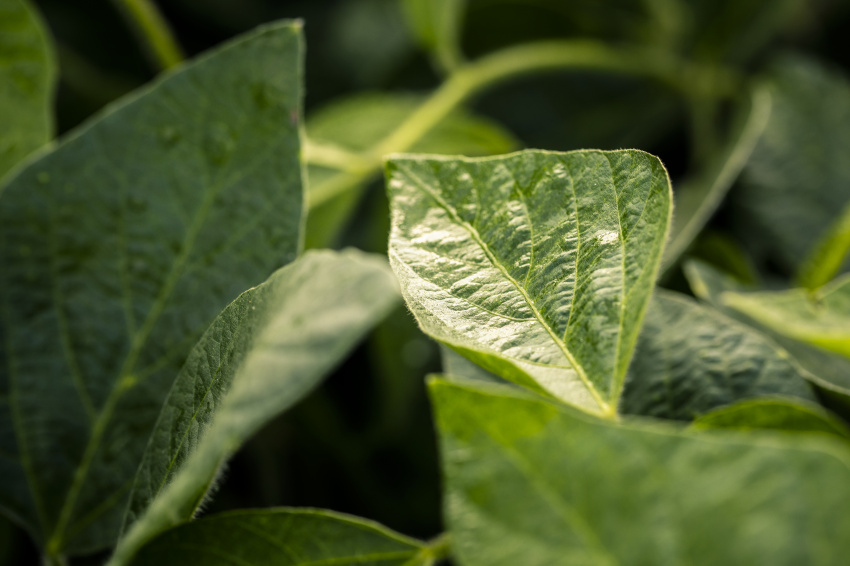Putting a Stop to Soybean Cyst Nematode

The search for alternate sources of resistance
When given the power, soybean cyst nematode is a harmful pest with a deafening impact on farmers’ bottom lines. Luckily, soybeans have been protected from this pest for years thanks to resistance genes from PI 88788; however, its efficacy against SCN is quickly fading.
There is hope. Researchers from both public and private organizations are collaborating to find new sources of SCN resistance, an effort funded in part by the soy checkoff.
Checkoff Funds Help Map SCN Resistance
Andrew Bent, a professor in the University of Wisconsin-Madison plant pathology department who studies the molecular basis of plant disease resistance, is one of the primary researchers leading the charge to discover new sources of resistance within the soybean plant. Bent says PI 88788 has worked well for the soybean industry for over 20 years. As use of varieties with this resistance source has increased, however, some nematode populations have evolved to overcome this mode of resistance and survive.
“You can buy a variety that’s marked as SCN resistant, but the SCN resistance might not be working,” Bent says. “It all depends on the population you have in your field and if it’s had a chance to evolve to overcome the resistance that used to work pretty well.”
Each year, SCN causes about $1 billion in lost revenue at the farm gate. Tony Mellenthin, a soy checkoff farmer-leader from Wisconsin, is one of the farmers who has seen loss due to SCN damage. In some cases, the harmful pest has even made its presence known.
“We absolutely have had experience with SCN damage on our farm,” Mellenthin says. “We haven’t just seen yield loss, but in some cases we’ve also seen physical symptoms like plant stunting and root pruning, which is a sign of extreme yield loss.”
Because of this rising problem, Bent and his colleagues, Brian Diers and Matt Hudson, proposed a research project to the checkoff to study the makeup of the resistance gene in the soybean plant. Through this research, they discovered Rhg1, the main genetic code responsible for SCN resistance in PI 88788 and many other sources of SCN resistance. Diers, a professor in the department of crop science at the University of Illinois who focuses on crop genetic improvement, says they learned that Rhg1 is more complicated than anticipated — it turned out to be a cluster of three separate genes.
“We identified that there’s a huge amount of variation at this locus that was not previously understood,” Diers says.
This information helps researchers like Bent and Diers identify different alleles within the sequence that control different forms of SCN resistance in the soybean plant.
“Just knowing the genetic fingerprint allows you to go into soybean germplasm collections and pull out interesting variants that might give you different types of resistance that the nematode has not evolved to overcome yet,” Bent says.
This research has created a breakthrough that has sped up the process of selecting new varieties that are SCN resistant and helps breeders at seed companies get one step closer to finding new varieties of soybeans that don’t depend on PI 88788 for SCN resistance.
Public Research Informs Private Development
Farmer investments in understanding the genetic makeup of the Rhg1 gene, and more recently a few other genes, give breeders at seed companies access to the improved genetic markers they can use to select varieties that have improved SCN resistance from Rhg1. Thanks to the work of public researchers like Bent and Diers, this knowledge is now in the hands of industry researchers like Don Kyle, soybean breeding evaluation zone lead at Corteva. This gives breeders like Kyle a head start when developing new SCN-resistant varieties of soybeans.
“There are a lot of resistance genes in the soybean plant that are in a publication somewhere but not in a farmer’s field,” Kyle says. “By utilizing information from research that people like Brian and Andrew have done, we’ve been able to go in and identify which genes would bring greater value to our customers and help them have more diverse options against nematodes.”
Breeders like Kyle leverage the information that has been uncovered through farmer investment in public research, accelerating its application on the farm. This includes understanding how the different resistance genes fit into crop rotation to provide diverse modes of resistance against SCN.
“Their research helps validate the approach we’re using to bring these other genes together into high-yielding, agronomically acceptable varieties for customers in the future,” Kyle says. “That type of information is not data that would normally be available to us at Corteva, so the work they do is really valuable.”
New varieties of soybeans can take anywhere from five to 10 years to bring to market. Because of the investment of U.S. soybean farmers and the soy checkoff, discovering new SCN-resistant varieties has already been in progress for years, and new varieties are getting closer to being on the market every day.
The soy checkoff understands the importance of having new SCN-resistant varieties and invests in this research for the long-term benefit of U.S. soybean farmers. And farmers like Mellenthin understand the importance of investing in research to discover these new varieties and what it means to him and his farm.
“The research and these breeding techniques are currently the main way to prevent SCN from continuing to be a yield robber for U.S. soybeans,” Mellenthin says. “The heart of the checkoff is to fund research that provides ROI to farmers. There’s no clearer path to a positive ROI than research like this.”
For more information about this and other checkoff-funded research into SCN resistance, visit www.thescncoalition.com/resources/research-summaries.



